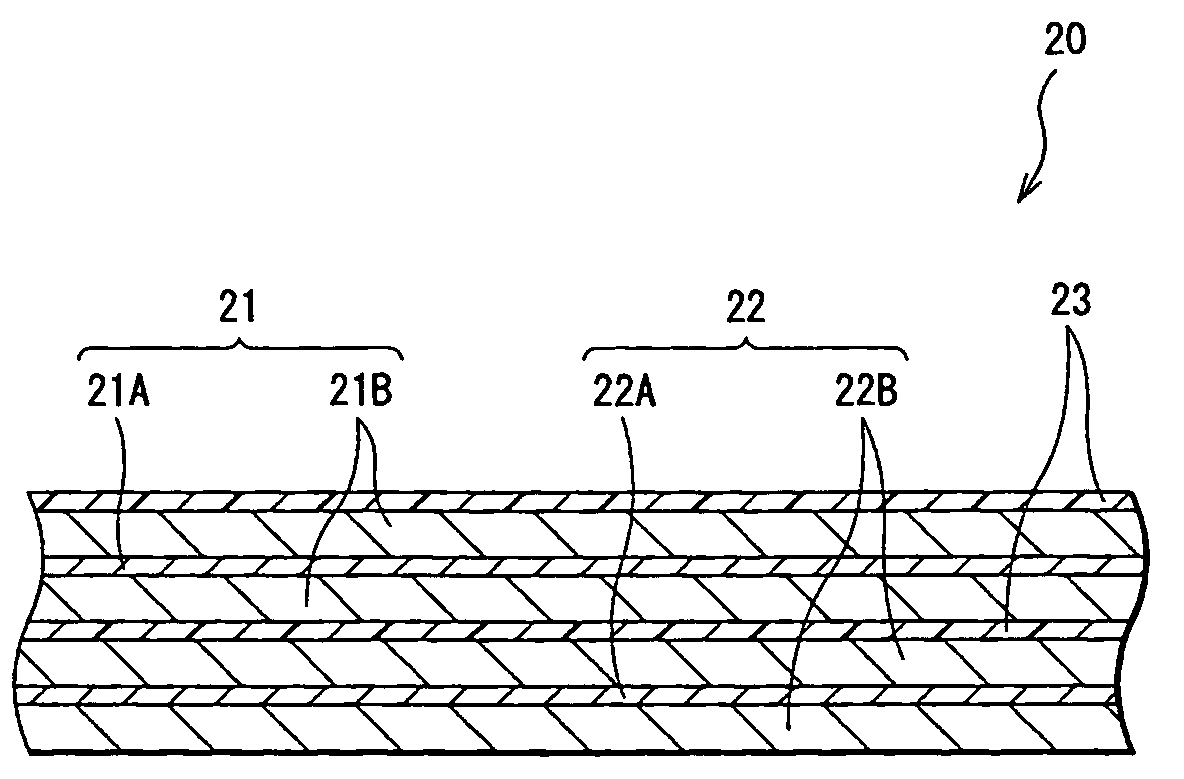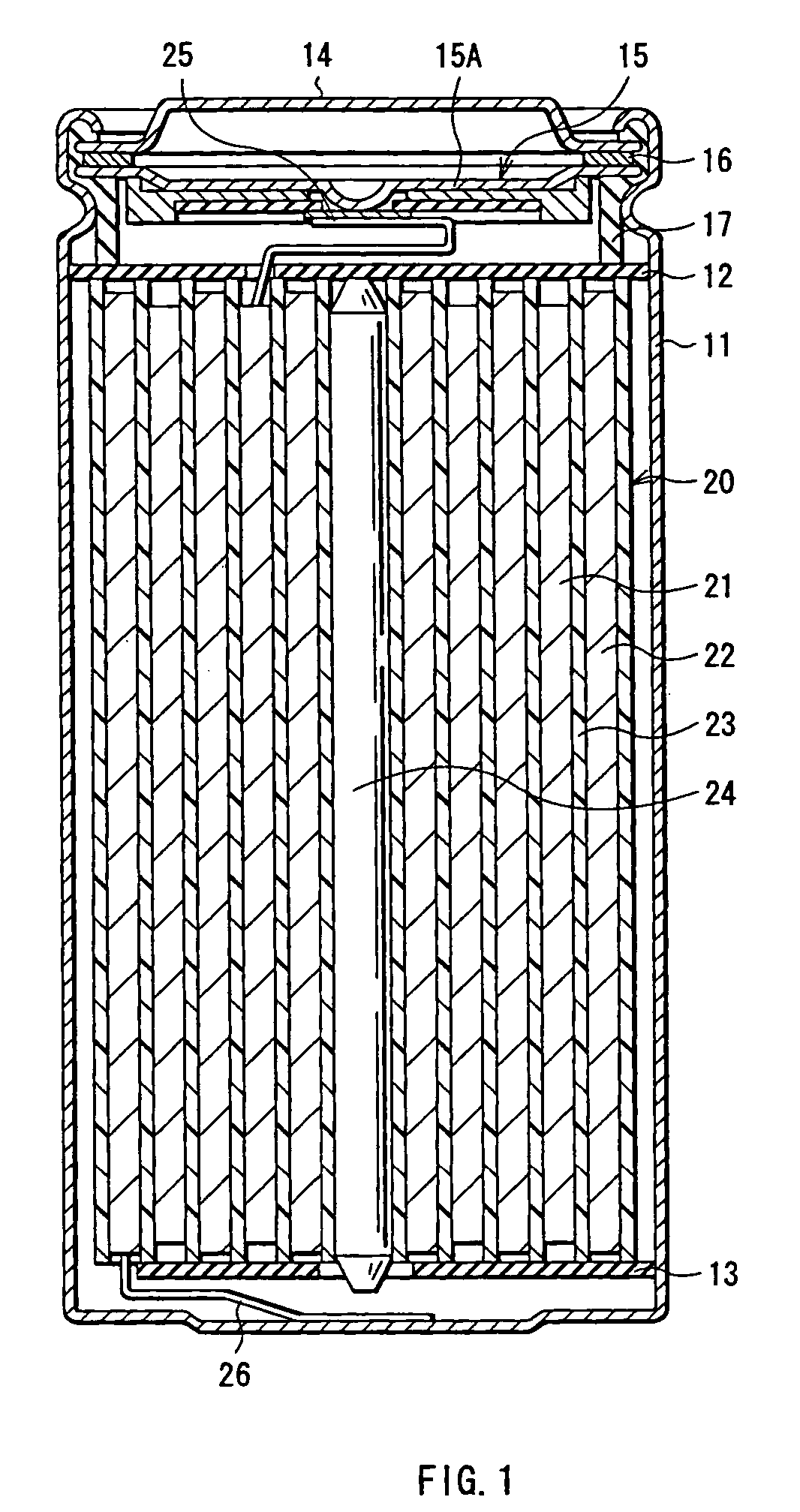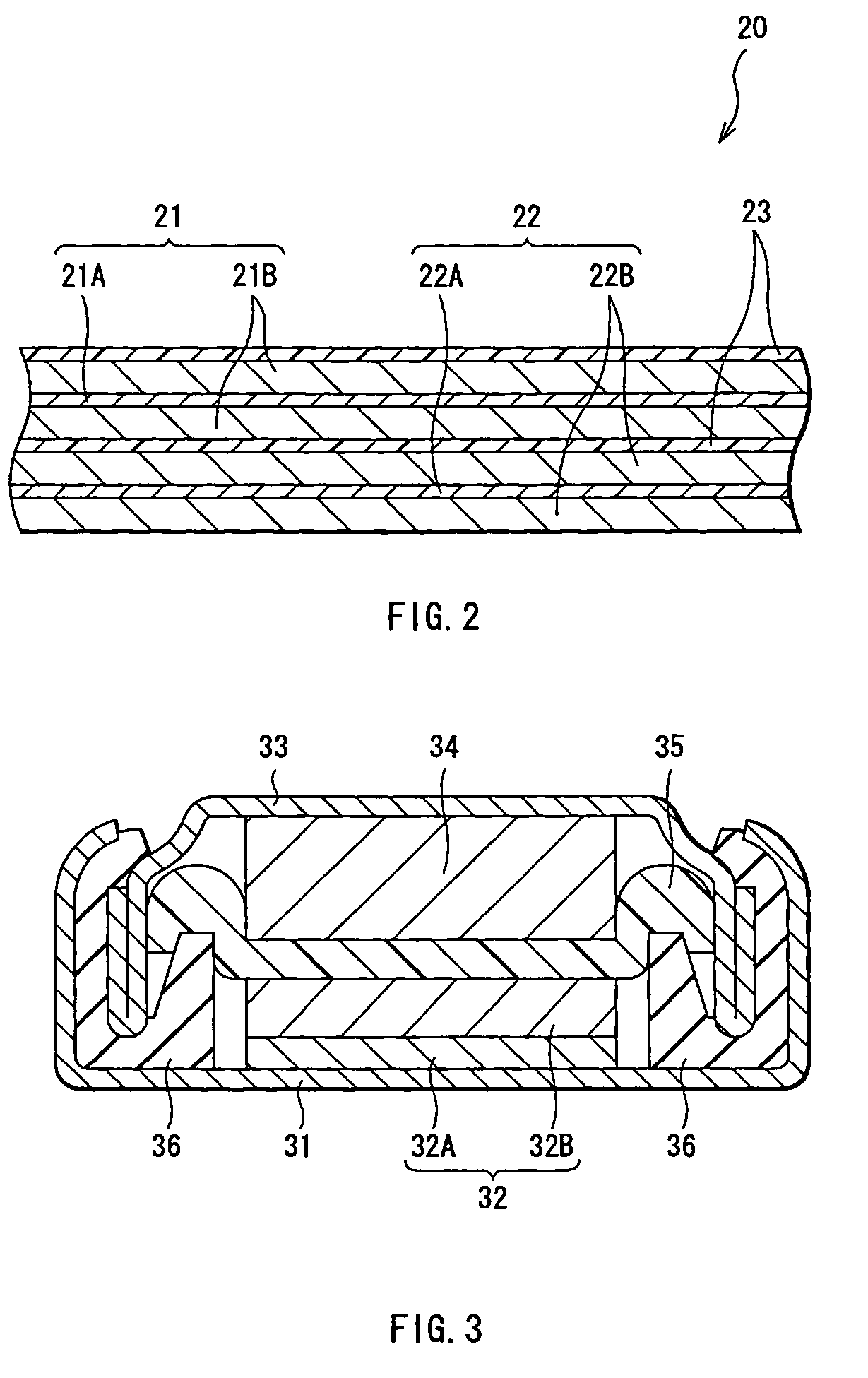Battery
a lithium metal secondary battery and battery technology, applied in the field of batteries, can solve the problems of large decline in discharge capacity, difficulty in putting lithium metal secondary batteries to practical use, and the amount of graphite insertion has been approaching the limit, so as to improve the charge-discharge cycle characteristics
- Summary
- Abstract
- Description
- Claims
- Application Information
AI Technical Summary
Benefits of technology
Problems solved by technology
Method used
Image
Examples
examples
[0055]Further, specific examples of the invention will be described in detail below.
examples 1-1 through 1-3
[0056]Cylindrical type secondary batteries as shown in FIG. 1 were formed. At first, lithium carbonate (Li2CO3) and cobalt carbonate (CoCO3) were mixed at a ratio (molar ratio) of Li2CO3:CoCO3=0.5:1, and the mixture was fired in air at 900° C. for 5 hours to obtain lithium cobalt complex oxide (LiCoO2). When the X-ray diffraction of the obtained lithium cobalt complex oxide was measured, the diffraction pattern closely matched a peak of LiCoO2 listed in the JCPDS file. Next, the lithium cobalt complex oxide was pulverized into the form of a powder with a particle diameter of 15 μm at 50% cumulative size which was obtained by a laser diffraction method to form a cathode active material.
[0057]Next, 95% by mass of a powder of the lithium cobalt complex oxide and 5% by mass of a powder of lithium carbonate were mixed to prepare a mixture, and then the 94% by mass of the mixture, 3% by mass of ketjen black as an electrical conductor and 3% by mass of polyvinylidene fluoride as a binder w...
examples 2-1 through 2-6
[0067]Secondary batteries were formed as in the case of Examples 1-1 through 1-3, except that as the carbon material, a carbon material formed through covering natural graphite particles with coal tar pitch, and then firing them in an inert atmosphere at 1200° C. or less was used. In Examples 2-1 through 2-3, natural graphite particles with an intensity ratio IB / IA of 0.1 was used, and in Examples 2-4 through 2-6, natural graphite particles with an intensity ratio IB / IA of 0.2 was used. The intensity ratio IB / IA of the carbon material was changed in Examples 2-1 through 2-6 as shown in Table 2 or Table 3. Moreover, as Comparative Examples 2-1 and 2-2 relative to Examples 2-1 through 2-3, secondary batteries were formed as in the case of Examples 2-1 through 2-3, except that the intensity ratio IB / IA of the carbon material was changed as shown in Table 2. Further, as Comparative Example 2-3 relative to Examples 2-4 through 2-6, a secondary battery was formed as in the case of Example...
PUM
| Property | Measurement | Unit |
|---|---|---|
| open circuit voltage | aaaaa | aaaaa |
| open circuit voltage | aaaaa | aaaaa |
| temperature | aaaaa | aaaaa |
Abstract
Description
Claims
Application Information
 Login to View More
Login to View More - R&D
- Intellectual Property
- Life Sciences
- Materials
- Tech Scout
- Unparalleled Data Quality
- Higher Quality Content
- 60% Fewer Hallucinations
Browse by: Latest US Patents, China's latest patents, Technical Efficacy Thesaurus, Application Domain, Technology Topic, Popular Technical Reports.
© 2025 PatSnap. All rights reserved.Legal|Privacy policy|Modern Slavery Act Transparency Statement|Sitemap|About US| Contact US: help@patsnap.com



